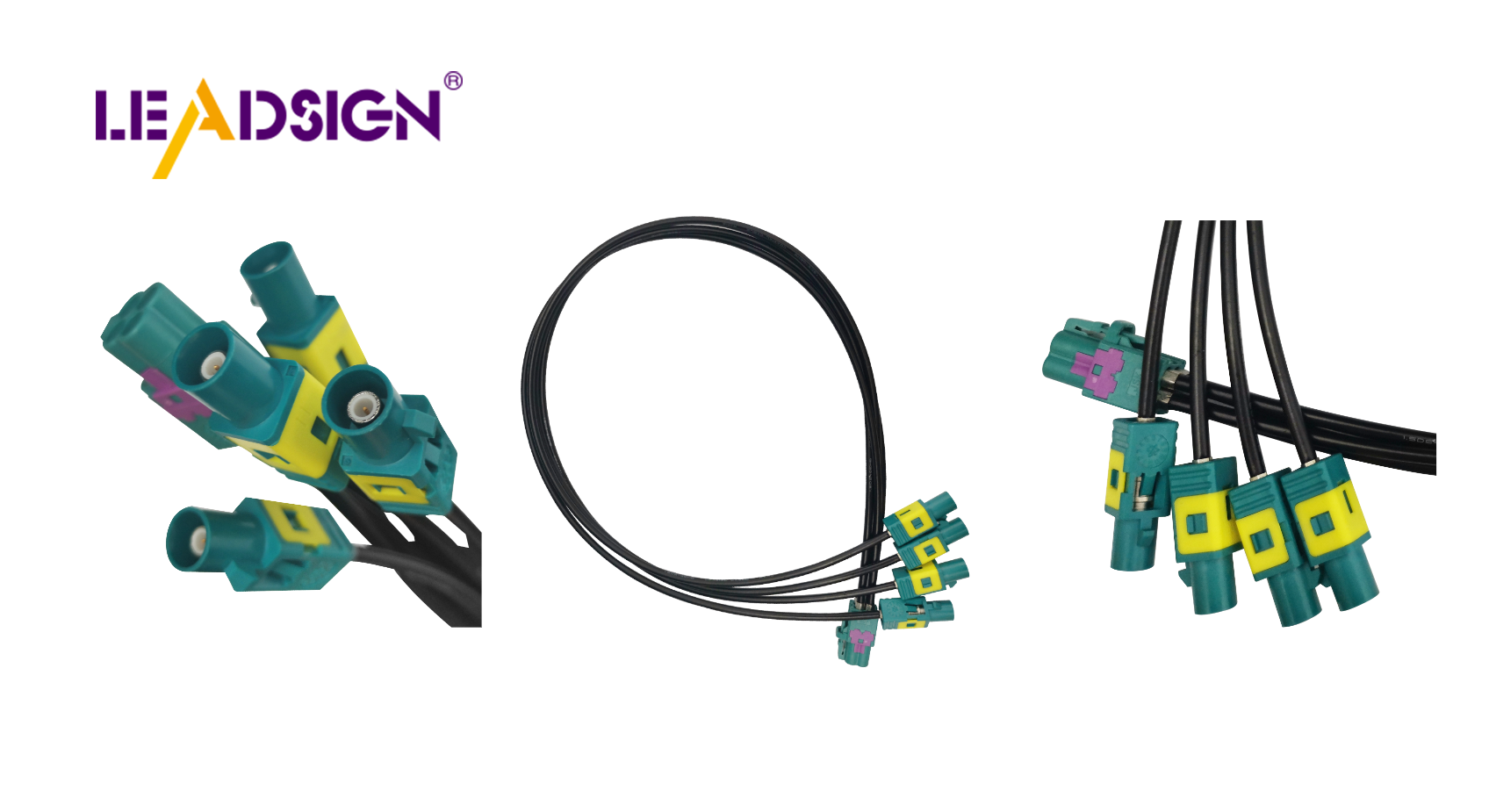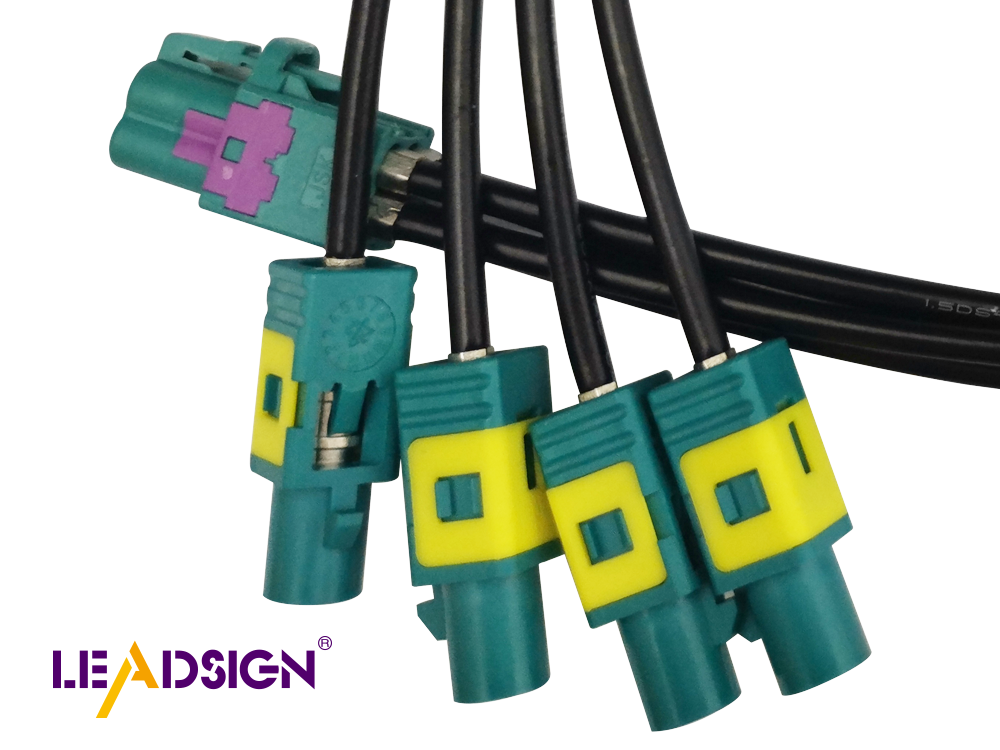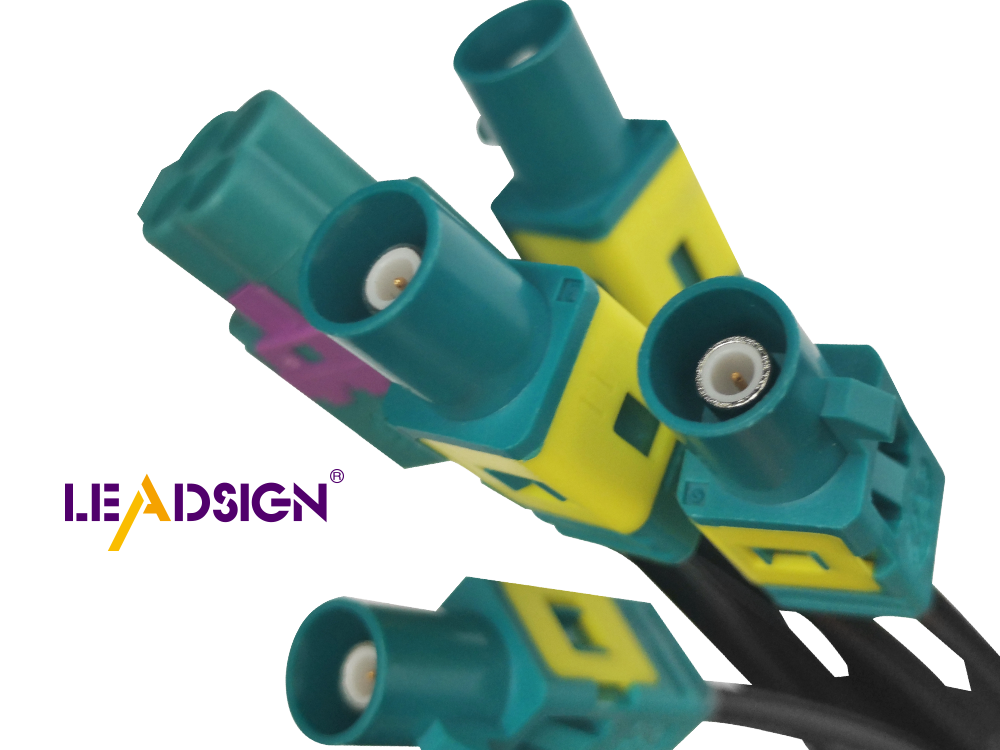Understanding the Types of Automotive Wire and RF Cable

Automotive wire and RF cable are crucial in today's world. They facilitate the transmission of data and power within vehicles. The automotive cable market is rapidly expanding, valued at $5.74 billion in 2023 and projected to reach $8.19 billion by 2028. This growth indicates an increasing demand for high-quality wires. Understanding the different types and applications of these components is essential for enhancing vehicle performance and meeting evolving automotive industry requirements.
Types of Automotive Wire

Automotive wire is important for car electrical systems. Knowing the types helps pick the right one.
Primary Automotive Wire Types
Primary wires are common in cars. They have many uses.
GPT Wire
GPT Wire is often used in cars. It has a flexible cover and many strands, so it fits in small spaces. This wire resists oil, acids, and chemicals. It works well from 80ºC to 105ºC. These traits make GPT wire reliable for many uses.
TWP Wire
TWP Wire is thinner than other wires. It's good for tight spots. Even though it's thin, TWP wire stays strong and bends easily. It works well in different car settings.
SXL Wire
SXL Wire has a special jacket that fights wear and heat. It's great for tough jobs, like in big trucks. Its strong build makes it last long and work well.
Specialty Automotive Wires
Specialty wires meet special needs in cars with unique features.
Fusible Link Wire
Fusible Link Wire protects car parts by breaking if too much current flows through it. This keeps sensitive parts safe from damage.
Battery Cable
Battery Cable connects the battery to the car's system. It carries lots of power safely and lasts in tough conditions.
Trailer Cable
Trailer Cable links a car to a trailer, sending signals for lights and brakes. It's made to handle towing stress while keeping connections secure.
Characteristics and Standards
Knowing wire characteristics helps choose the right type for each use.
Insulation Materials
Car wires use covers like PVC to protect against heat and chemicals, making them last longer.
Temperature Ratings
Temperature ratings show how hot a wire can get without breaking down, usually between 80ºC to 125ºC.
Voltage Ratings
Voltage ratings tell how much voltage a wire can handle safely, important for things like lights.
Types of RF Cable

RF cables help send high-frequency signals with little loss. Knowing the types helps pick the right cable for each job.
Coaxial Cables
Coaxial cables are common RF cables. They have an inner wire, a cover, and an outer shield. This setup cuts down signal loss and stops interference, making them great for high-frequency work.
RG-6
RG-6 cables are used for TV and internet. They lose little signal and work indoors or outdoors. Their strong build makes them good over long distances.
RG-11
RG-11 cables are thicker than RG-6, losing even less signal. They're used for long trips where signal is key. They're tough and often chosen by pros.
RG-59
RG-59 cables are for short video tasks. They're more bendy than RG-6 and RG-11, fitting in tight spots easily but not as good far away.
Twinaxial Cables
Twinaxial cables have two copper wires split by insulation. This design blocks noise better and sends data faster than coaxial ones.
Characteristics
Twinaxial cables block noise well and send data fast. They're used where keeping signals clean is important.
Applications
These cables work in data centers and fast networks. They handle lots of data, perfect for modern systems.
Fiber Optic Cables
Fiber optic cables use light to send data quickly over long spaces.
Single-mode
Single-mode fiber optic cables are made for long talks. They use one light path to cut signal loss and boost bandwidth.
Multi-mode
Multi-mode fiber optic cables go shorter distances. They support many light paths, good for local networks.
Uses and Comparisons
Car Wire Uses
Car wires are key for many car parts. They help things work well.
Electrical Parts
Car wires power lights, controls, and engine starters. They keep parts working right by giving them power. These wires handle tough conditions in cars.
Sending Signals
Car wires send signals between systems like GPS and radio. They make sure signals are clear, improving driving.
RF Cable Uses
RF cables are important for communication today. They send high-frequency signals with little loss.
Communication Tools
RF cables help with TV and wireless networks. They carry signals far without losing quality, perfect for keeping signals strong.
Data Transfer
RF cables move data fast and steady. Used in data centers, they keep signal quality high for best performance.
Comparing Wires and Cables
Knowing the differences helps pick the right one for each job.
Toughness
Car wires last in heat and chemicals, built strong for cars. RF cables keep signals clear over long distances, resisting interference well.
Effectiveness
Car wires deliver power smoothly in vehicles. RF cables send high-frequency signals with low loss, keeping data moving efficiently.
"Picking the right cables is key to system success." This shows why choosing the right wire or cable matters for strength and efficiency.
Choosing the right wire and cable is very important. It helps cars and RF systems work well and stay safe. Each type does a special job, making sure power and data move efficiently.
Learn More: Look into how these wires work to choose wisely.
Ask Experts: Talk to professionals for advice on your needs. They can help make systems last longer.
"Picking the right wire or cable makes systems work better for longer.
See Also
Maximizing Automotive Connectivity with FAKRA Coaxial Cables
Benefits of HFM RF Connectors for Automotive Innovation
Streamlining Automotive Data Transfer with Advanced Connectors
Benefits of FAKRA PCB Mount Connectors in Automotive Technology
Improving Automotive Data Transfer using FAKRA PCB Connectors

